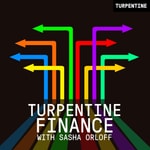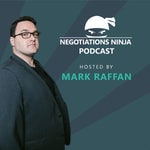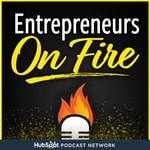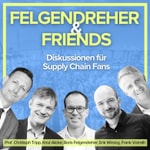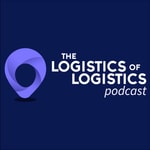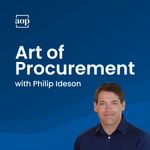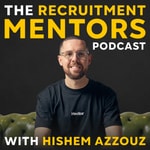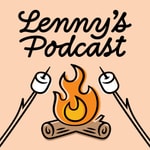The Procurement Software Podcast – Détails, épisodes et analyse
Détails du podcast
Informations techniques et générales issues du flux RSS du podcast.
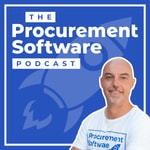
The Procurement Software Podcast
James Meads
Fréquence : 1 épisode/12j. Total Éps: 161

Classements récents
Dernières positions dans les classements Apple Podcasts et Spotify.
Apple Podcasts
🇫🇷 France - management
31/07/2025#84🇫🇷 France - management
30/07/2025#54🇫🇷 France - management
29/07/2025#29🇬🇧 Grande Bretagne - management
12/04/2025#97🇬🇧 Grande Bretagne - management
28/03/2025#81🇬🇧 Grande Bretagne - management
24/03/2025#74🇬🇧 Grande Bretagne - management
23/03/2025#63🇨🇦 Canada - management
15/03/2025#79🇨🇦 Canada - management
14/02/2025#83🇬🇧 Grande Bretagne - management
03/02/2025#99
Spotify
Aucun classement récent disponible
Liens partagés entre épisodes et podcasts
Liens présents dans les descriptions d'épisodes et autres podcasts les utilisant également.
See all- https://www.linkedin.com/in/danielbarnesgsd/
45 partages
- https://linkedin.com/in/james-meads/
40 partages
- https://www.linkedin.com/in/rsains/
18 partages
Qualité et score du flux RSS
Évaluation technique de la qualité et de la structure du flux RSS.
See allScore global : 73%
Historique des publications
Répartition mensuelle des publications d'épisodes au fil des années.
How to make SAP more intuitive - Shaun Syvertsen from ConvergentIS
Saison 5 · Épisode 25
mercredi 11 septembre 2024 • Durée 37:34
In this episode of The Procurement Software Podcast, host James welcomes Shaun Syvertsen, CEO of Convergent IS, to discuss how organisations can enhance their procurement processes by improving the user experience of SAP.
They delve into the complexities of the system and share insights on how to leverage procurement technology to simplify the intake-to-procure process for companies who use SAP as their ERP.
Tune in to discover practical strategies and tools that can help your organisation navigate the evolving landscape of procurement software, especially tailored for the mid-market.
This episode dives into the importance of having a clear procurement strategy before selecting any technology. Sean emphasises the need for clarity in your goals, ensuring alignment between technology solutions and your organisation’s needs.
Key takeaways include:
Defining Your Strategy: Be clear on your procurement approach before exploring technology options.
Aligning with Goals: Make sure the chosen tools align with your organisation’s objectives to avoid adoption gaps.
User Adoption: Sean discusses how user-friendly technology is crucial for ensuring employees engage with the system rather than bypass it.
Expert Guidance: Investing in expert advice early on can save both time and resources by selecting the right technology from the start.
Tune in to learn how a well-defined strategy can lead to successful procurement technology investments and drive long-term organisational success.
[00:02:10] SAP user experience enhancement
[00:05:14] Know your why before your what
[00:10:02] Integration with SAP systems
[00:12:30] Orchestration in procurement systems
[00:17:59] User adoption and process design
[00:20:16] Procurement transparency and efficiency
[00:23:11] Orchestration solutions in procurement
[00:27:29] Preventing SaaS sprawl in organisations
[00:32:40] Reducing time to value with AI
And that wraps up another episode of The Procurement Software Podcast!
Thanks again for listening, and do please leave us a review on Apple Podcasts or rate us on Spotify. Every one helps!
We'll be back at the same time next week, so see you there.
If you want to learn more about Procurement Software, check out the useful links below.
Stay in touch!
Grab your ticket to ProcureCon EU in Barcelona with 10% off!
- Connect with Shaun Syvertsen on LinkedIn
- Check out ConvergentIS
- Download our Tech Map for Enterprise
- Download our Tech Map for Mid-Market
- Download our Tech Map for SMEs
- Find your perfect procurement tech solution in our Software Finder app
- Sign up for the
Our Procurement Tech Maps: SME, Mid-Market, and now Enterprise
Saison 5 · Épisode 24
mercredi 4 septembre 2024 • Durée 19:26
- Download our Tech Map for Enterprise
- Download our Tech Map for Mid-Market
- Download our Tech Map for SMEs
- Find your perfect procurement tech solution in our Software Finder app
- Sign up for the Procurement Software Newsletter
- Book an Intro Call and let’s talk all things Digital Procurement!
- Connect with James on LinkedIn
How to get ROI on Digital Transformation – Oliver Jones from Procure4
Saison 5 · Épisode 15
mercredi 26 juin 2024 • Durée 33:52
- Connect with Oliver Jones on LinkedIn
- Check out Procure4
- Download our Tech Map for Enterprise
- Download our Tech Map for Mid-Market
- Download our Tech Map for SMEs
- Find your perfect procurement tech solution in our Software Finder app
- Sign up for the Procurement Software Newsletter
Best-of-Breed vs. Enterprise Suites: The Procuretech Pub with Nico Bac
Saison 2 · Épisode 15
mercredi 15 décembre 2021 • Durée 54:12
- Will there be a consolidation of the best-of-breed market, as companies who fail to deliver the expected growth don't make the grade for the next round of funding?
- Who will buy them up? The suites or other BoB providers? Or will other procurement software companies simply poach their best talent and / or purchase their IP?
- Realistically, the market probably isn't big enough for 5 suite providers. Will we see a consolidation among the suite providers, as both best-of-breed solutions and the market leading suites both attack the less dominant suites and eat into their market share?
Stay in touch!
- Connect with Nico on LinkedIn
- Download our Tech Map for Enterprise
- Download our Tech Map for Mid-Market
- Download our Tech Map for SMEs
- Find your perfect procurement tech solution in our Software Finder...
Leveraging E-Auction Data for Customer Success – Henrik Balslev from Scanmarket
Saison 2 · Épisode 14
mercredi 8 décembre 2021 • Durée 32:04
- Less focus purely on price
- More thought around which commodities or categories to tender in an auctions
- More thought and strategy regarding which type of auction or e-sourcing event to utilise
- When in the process to take the negotiation process offline and move to in person discussions
The move towards a total cost of ownership (TCO) strategy in many organisations has been the bedrock behind these seismic shifts. What about using auctions for services? Henrik surprisingly confirms that services have always been in the top 10 of most auctioned areas of spend within Scanmarket's platform, but they have seen a significant uptick since the start of the pandemic in March 2020. What sets services apart is that it is often more tricky to get stakeholders on board for tendering using an e-auction, and that it's also more difficult to measure some of the nuances in proposals for services. "Use the tool when and where it makes sense" is a very good time from Henrik to make sure that it aids and abets the user, rather than hindering the process through having a policy that forces category managers to use a software that isn't suitable for the tender or RFP in mind. Running the auction for certain elements within a specific provision of service can also be a successful strategy, and then inviting the top 3 suppliers from the auction to 1-on-1 negotiations to discuss the devil behind the detail. In other words, auctions are a great way to shortlist vendors if there is a large pool of potential suppliers for a certain service. How specifically does Scanmarket leverage their auction data? The same category for one company can be completely different to the situation within another organisation. There are so many parameters that aren't fixed and are dependent upon an organisation's maturity of procurement, relationship with incumbent vendor, and so on. Rather than focusing on this, they tend to look at more holistic data. Henrik cites an example of the optimal number of vendors to include in an auction. Bringing in an extra supplier into the auction statistically increases the savings by 1.11%, but only up to a total of 7 participating suppliers. Increasing the supplier count beyond 7 doesn't bring additional savings according to Scanmarket's data. We explore how a customer can also best achieve their end goal based on the different auction types and functionalities which can be switched on and off. The "if this, then that" (IFTTT) scenarios which can be looked into based on the data that Scanmarket has, to be able to guide the customer along a path that is likely, statistically, to be more successful. Dealing with...
Affordable, easy to use E-Sourcing and Auctions – Nicholas Martin from Market Dojo
Saison 2 · Épisode 13
mercredi 1 décembre 2021 • Durée 25:30
- Core product is e-auctions
- RFQ
- Live questionnaires / surveys to factor in considerations other than price, which can provide real time feedback during the event
- Advanced lots: obtaining cost breakdowns at a much deeper level, without relying on Excel after-the-fact.
How do they avoid the trap of trying to be everything to everyone? Figuring out in the early days to understand WHAT features to pitch to WHICH type of customers has helped Market Dojo to learn and grow, and also to decide which features to prioritise. Some aspects of the tool may be more valuable to some users than others. For example, an independent consultant may place a lot of value on a choice of different types of e-auctions, whereas an SME or growing startup would need a lot more hand holding when it comes to running events, and perhaps appreciate simplicity and an intuitive UX a lot more. Niching down is a great marketing theory in principle, but they found that they were winning customers in quite different industries and niches during their early days. Market Dojo has since seen e-auctions run on such diverse categories of spend as global freight, purchased parts and fruit & vegetables, so versatility and offering a solution that can be used in a variety of different industries has been a difficult but possible balance to achieve. Maturing from a pure play e-Sourcing tool to a more rounded solution Taking on board customer feedback was a key factor in instigating Market Dojo to develop additional modules as they have grown from being a pure play e-Sourcing solution into evolving into more of a mini-suite. An example is with the supplier onboarding tool, which was developed based on a request that was made from one of their early customers. One of their biggest challenges was with supplier intake, and they recognised that Market Dojo would be a good solution for this if they could expand beyond just the sourcing module. Whereas on the other hand, some customer requests were seen not to be aligned with their overall vision and direction, and instead led them to seek out partners who could offer such a solution as a best-of-breed solution that could be integrated with Market Dojo's...
E-Sourcing plus Vendor Relationship Management – David Wadler from Vendorful
Saison 2 · Épisode 12
mercredi 24 novembre 2021 • Durée 28:01
User Experience at the Heart of E-Sourcing – Jack MacFarlane from DeepStream
Saison 2 · Épisode 11
mercredi 17 novembre 2021 • Durée 27:26
- Strategy to buy a feature rich, expensive software suite that requires a lot of training to use
- Get management buy-in
- Top down "enforcement" of the policy
Which ultimately fails if over time, users revert back to form and use what they feel comfortable with i.e. email and Excel. What about UX for supplier onboarding? While suppliers will always be sceptical towards e-sourcing software, DeepStream have endeavoured to make the supplier experience as smooth as possible. The average onboarding time for suppliers is < 5 minutes and it's free to register. There are also a couple of measures that they are using to encourage suppliers to get more from the...
Leveraging E-Sourcing for Non-Price Factors – Lukas Wawrla & Tim Grunow from Archlet
Saison 2 · Épisode 10
mercredi 10 novembre 2021 • Durée 27:28
The Lowdown on Spend Matters 50 To Know, 50 To Watch and ProcureTech 100
Saison 2 · Épisode 9
mercredi 3 novembre 2021 • Durée 32:52
This week is a solo episode. I rarely do them, and I thought long and hard before publishing this.
At the end of the day, I'm just one person who has a keen interest in digital procurement technology. I'm not an academic or a researcher, but I do take a passionate interest in what is out there and I have some strong views on what I feel should be the priorities when it comes to digital procurement transformations.
I'm also acutely aware that most of the listeners to the podcast are not CPOs in enterprise level organisations. My aim is to bring content out there to Procurement Leaders outside of Fortune 500 companies and to shine light on solutions that are a fit for regular, mid-market businesses.
Challenging or questioning the conventional wisdom of how these lists are made up is something I debated for a while.
Ultimately I decided that listeners need to know and understand what goes into selecting these lists, so as they can look at them with a critical mindset and draw their own conclusions.
I sincerely hope this episode provides value to everyone who listens to it and I would love to hear your feedback!
Spend Matters Spend Matters are a household name to anyone in the Procurement space and are part of a larger parent company, Azul Partners. Spend Matters was founded by Jason Busch in 2004 and was one of the first Procurement and Supply Chain Blogs. The focus on digital procurement technology with their 50 To Watch and 50 To Know began in earnest in 2014, and has since grown to be the go-to resource for research, analysis and content in the digital procurement space. So, what are the 50 To Watch and 50 To Know? Let's have a look: Almanac They're part of a wider directory of digital procurement solutions housed on the Spend Matters called the Spend Matters Almanac. The Almanac has over 530 listings from 59 categories and over 140 analyst insights. Feeding into the Almanac is the Spend Matters Solution Map, an interactive software solution finder, where the user can select a comparison of different types of procurement software based on a bunch of different criteria and buying personas. Spend Matters have a pretty big analyst team to crunch the data, and the listings have been going since 2014, so they have a huge back catalogue of content and analysis to draw from! There are 23 different categories in the Almanac in total, and not all of them are focused on software itself. There are some consulting, training and membership organisations included in here too. But this is what sets the base for the 50 To Know and 50 To Watch So, how do we get from here to the 50 To Know and 50 To Watch lists? "The Spend Matters® annual 50 Providers to Know and 50 Providers to Watch lists are determined by the entire Spend Matters analyst team to represent the best of the commercial providers that serve enterprise-level procurement organizations." "We do not include brand new startups with only a few employees and customers who are piloting some “minimum viable products”. We track over a dozen of them right now and are working on highlighting them in the near future."...